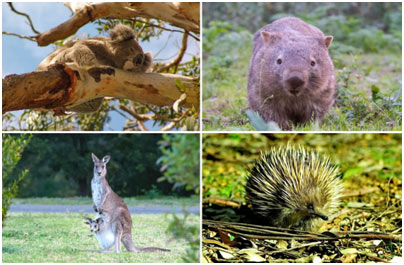Facts you don’t know about Australia!!!
- Australia is a dry continent that mostly consists of deserts.
- Australia is the one and only country on its continent.
- The world’s largest coral reef ecosystem “The Great barrier reef” is in Australia.
- Australia has the most dangerous species of spiders; the Sydney Funnel Web spider, second to the Brazilian wandering spider.
- Australia is home to the world’s most poisonous snakes.
- There are no active volcanos in Australia.
- There are more animals in Australia than anywhere else (even more than Koalas).
- Australia has the large number of beaches approximately 10,000.
Wildlife of Australia
Some 180 million years earlier, the supercontinent of Gondwana split. Among the breakaway landmasses from that separation, there become Australia and Antarctica. By 30 million years ago Australia had actually completely separated and journeyed north on its own. Australia hosts abundant biodiversity. Compared to other regions of the world, it has special wildlife.
Endemic animals stroll easily in the wild. Some of them are Australia’s cultural icons such as the kangaroos, koalas, and emus. More than 80% of plants, mammals, reptiles, and frogs are distinct to Australia and are discovered nowhere else worldwide. Listed below are the popular endemic animals of Australia.
1.Kangaroo
The amazing kangaroos are only found in Australia. They found in a range of environments including woodlands, forests, grassy plains, and savannahs. There are four kinds of kangaroos– red kangaroo, antilopine kangaroo, eastern grey kangaroo, and western grey kangaroo, all are endemic to Australia.
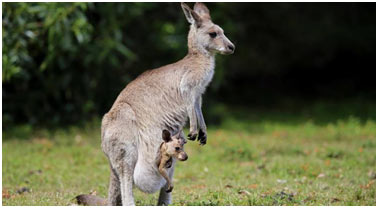
Kangaroos are the national sign of Australia. Remarkably, there are more kangaroos than humans in Australia. Kangaroos are very social and live in groups called mobs or herd. Typically, a mob of kangaroos consists of 50 or more members. Kangaroos are herbivorous animals. They eat leaves, flowers, ferns, bugs, and grass.
2.Koala
Koalas are marsupials. This means that they are mammals that bring their young in a pouch. They look like cute bears however koalas are absolutely not bears. Koalas live in eucalypt forests along the eastern coastline of Australia. They are delicate animals but mature to 80 cm/ 2.2 ft in height and weigh only about 14 kg/ 31 lbs. Baby koalas are called ‘joeys’ and hide in their mother’s pouch for the very first six months. Koalas consume great deals of eucalyptus leaves (1 kg/ 2.2 lbs. per day) and sleep up to 20 hours.
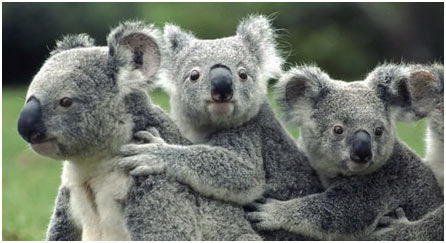
3.Numbat
The Numbat is an endangered small marsupial that endures in southwest Western Australia. Due to its little size, the Numbat is hunted by many animals like feral felines, foxes, dingoes, and birds of prey. Since it entirely on termites that are active by day, the Numbat is the only diurnal (opposite of nocturnal) marsupial.
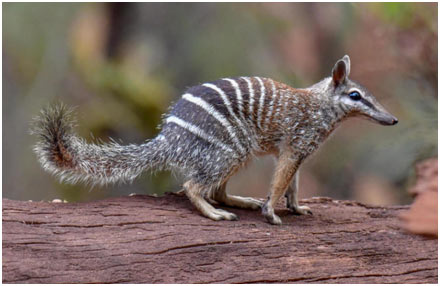
It invests nights hiding in hollow logs or burrows that are too narrow for its predators to enter. To further protect itself from predators in the evening, it uses its very thick-skinned rump to obstruct the entryway.
4.Platypus
The platypus is among the most unusual, weird, and strange-looking animals on the planet. Due to the fact that they have a flat bill like a duck, a tail like a beaver, and a body like an otter. These unusual but amazing platypuses are endemic to Eastern Australia. Platypus likewise has webbed feet like a duck which aid in swimming.
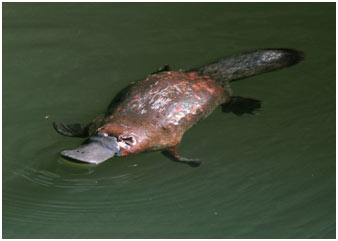
The suck-like flat bill of platypuses is in fact a sensory organ that includes countless receptors. It allows platypuses to detect prey such as shellfish or shrimps. Platypus comes from a family of egg-laying mammals known as monotremes. There are just 2 living monotremes on the planet– platypus and echidna.
5.Laughing Kookaburra
This bird is the world’s biggest kingfisher bird and grows up to 46 cm/ 18 inches from beak to tail. The kookaburra is known for its laughing voice which seems like human laughter. Laughing kookaburras can be quickly heard and thus easily be spotted.
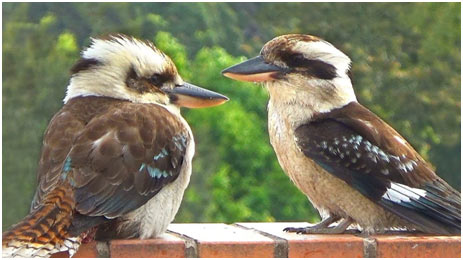
This family-oriented bird does its common call to develop the area of the family unit and warn off other kookaburras. The family unit may vocalize together like a chorus to amplify their claim to their area. If any competing families are within earshot they too may respond.
6.Short-beaked Echidna
Echidna is a little primitive animal present mainly in Australia. Their little body is covered with both fur and spines. The spines of echidnas are actually specialized hair made of keratin. These long spinal columns help the echidnas to resist predators.
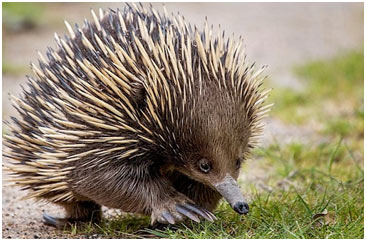
Echidnas are likewise known for their long snout. When picking up the threat from predators like dingoes, feral felines, or red foxes, the echidnas will curl into a ball like a shape and expose their long spines. Echidnas are also known as spiny anteater as they have a sticky, long tongue like an anteater and they use it to capture ants and termites. They also have no teeth.
7.Tasmanian Devil
The Tasmanian Devil, when seen throughout mainland Australia, can now only be discovered in Tasmania. It plays an essential role in Tasmania’s environment by assisting in control introduced animals that victimize native wildlife. It’s the only native animal to successfully outsmart introduced species such as feral cats and red foxes.
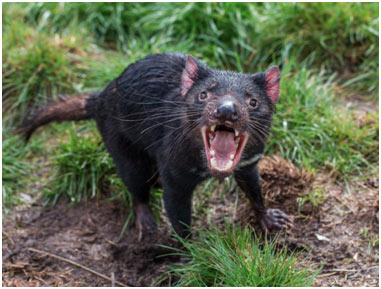
While the devil is around, it’s challenging for feral felines and foxes to reproduce in Tasmania which is great news– especially for native animals that have a much better opportunity of survival as a consequence. Unfortunately, it is listed as Endangered according to the IUCN Red List, with a decline of more than 60% in the last ten years, mainly due to an infectious facial tumor disease.
8.Emu
The emu is the largest bird in Australia. It reaches up to 2 m/ 6.5 ft in height and can run truly quick, with speeds up to 50 km/ 31 miles per hour. Nevertheless, emus cannot fly, just like an ostrich. Emus have a different diet: they feed on grass and leaves, fruits, and insects. The emus are flightless birds that safeguard themselves with strong effective kicks. Their name comes from the Portuguese word ’em a’ which means large bird.
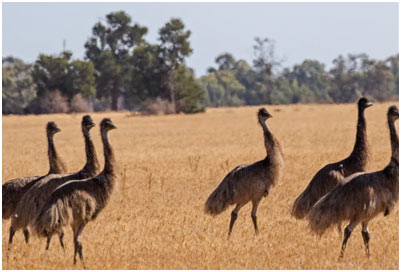
9.Sydney Funnel-Web Spider
The Sydney funnel-web spider is the world’s deadliest spider. The funnel-web spider injects a fatal toxin whenever it bites and death happens within an hour. Nevertheless, an anti-venom has been established and for more than 30 years there has been no fatality.
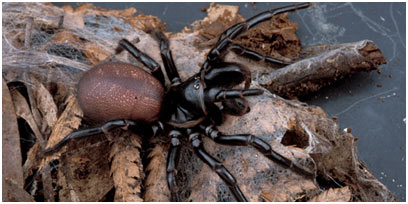
Australians are extremely familiar with the danger of being bitten by a funnel-web spider, so they take safety measures when hiking in the bushland or working in the garden.
10.Pellucid Hawk Moth
The Pellucid Hawk Moth is a unique species that looks like a cross in between a moth, a cicada, and a Glass wing Butterfly. Extremely few species of Lepidoptera, the insect order which includes all butterflies and moths, have scaleless, transparent wings.
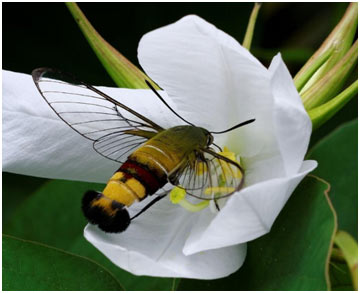
It’s believed these wings show about 50% less light than opaque ones, rendering the wings nearly undetectable in flight. It resembles an invisibility cape which makes it a fantastic defense versus ending up being a victim.

